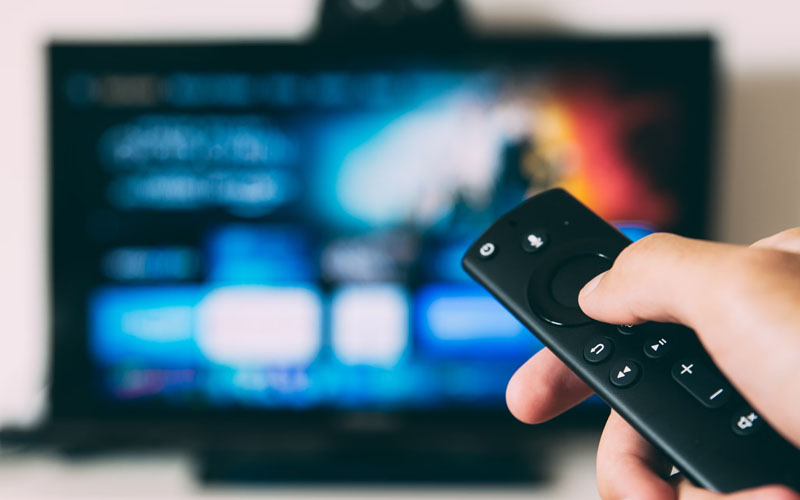Have you ever wanted to watch your favorite Netflix series on the big screen but didn’t know how to connect your smartphone to your TV? With so much fantastic content available on our smartphones, it’s no wonder more people want to elevate their viewing experience by streaming straight to their televisions. Whether it’s for enjoying a movie night, sharing family photos, or mirroring your phone for a presentation, the possibilities are endless.
This guide will walk you through the most popular ways to connect your smartphone to your TV, breaking down both wired and wireless methods. By the end of this post, you’ll know which option fits your needs best, how to set it up, and even how future technologies could make this process even more seamless.
Connecting Your Smartphone to Your TV
Wired Connections
Wired connections are valued for their reliability and often provide the highest quality. If your TV doesn’t have built-in wireless capability, you can still connect your smartphone via cables.
1. HDMI Cable + Adapter
Step-by-Step Instructions
- Purchase an HDMI adapter compatible with your smartphone (e.g., Lightning Digital AV Adapter for iPhones or USB-C to HDMI adapters for most Android phones).
- Plug the adapter into your phone’s charging port.
- Connect one end of the HDMI cable to the adapter, and the other end to an HDMI input on your TV.
- Use your TV’s remote to select the correct HDMI source/input channel.
Advantages:
- Crystal clear picture and sound quality.
- No wireless interruptions like lag or connectivity breaks.
Disadvantages:
- Requires you to stay close to the TV.
- Buying an external adapter can be pricey and device-specific.
2. MHL or Slimport
Mobile High-Definition Link (MHL) or Slimport allows Android devices to connect directly to TVs via HDMI or VGA for older TVs. Make sure your phone is MHL or Slimport compatible.
Note: MHL is not as common in newer devices.
Advantages:
- Offers high-quality video and audio.
- Options for connecting older TVs via VGA.
Disadvantages:
- Limited compatibility with newer smartphones.
Wireless Connections
Wireless methods are more convenient as they allow you to connect your smartphone to your TV without dealing with cables. These methods rely on Wi-Fi or Bluetooth technology.
1. Screen Mirroring (Miracast)
Many modern TVs and smartphones support Miracast for screen mirroring. Android users can typically find this functionality, while iPhone users may need an Apple-compatible device like Apple TV.
Step-by-Step Instructions
- Ensure both your TV and phone are connected to the same Wi-Fi network.
- On your smartphone, go to “Settings” > “Display” > “Screen Mirroring” (or similar, based on your device).
- Select your TV from the available device list.
Advantages:
- Mirrors your entire phone screen for a larger viewing experience.
- No additional equipment required.
Disadvantages:
- Limited streaming quality, especially for fast-paced content such as games.
- May not be supported on older TVs.
2. Chromecast/Streaming Devices
Google Chromecast and other streaming devices (such as Roku, Amazon Fire Stick, or Apple TV) make connecting your smartphone to your TV incredibly simple.
Step-by-Step Instructions for Chromecast
- Plug the Chromecast into an HDMI port on your TV and connect the USB cable for power.
- Download the Google Home app on your smartphone.
- Set up your Chromecast through the app by connecting it to the same Wi-Fi network as your phone.
- Tap the “Cast” icon on supported apps (e.g., YouTube, Netflix, Spotify) and select your Chromecast.
Advantages:
- Convenient and seamless streaming of supported content.
- No need for additional cables.
Disadvantages:
- Requires a streaming device.
- Not all apps support casting.
Advanced Smart TV Connections
Modern smart TVs have native smartphone integration built in. This allows you to cast content, use AirPlay, or install equivalent apps on the TV.
1. AirPlay for Apple Devices
Apple users with TVs that support AirPlay (or Apple TV) can easily share content directly.
- Ensure both devices are on the same Wi-Fi network.
- Open the app you want to share content from on your phone, tap the “AirPlay” icon, and choose your TV.
2. Built-in Apps & Casting Options for Android
Android phones and smart TVs (e.g., Samsung, Sony, LG) support casting apps directly from the phone or built-in apps like YouTube.
Comparing the Options
When deciding which method to use, consider the following factors:
|
Connection Type |
Advantages |
Disadvantages |
|---|---|---|
|
HDMI (Wired) |
Reliable, high-quality. |
Limited mobility, additional cost. |
|
Screen Mirroring |
No extra equipment required. |
May face lag or quality drops. |
|
Streaming Device |
User-friendly, seamless for apps. |
Requires a streaming device. |
|
Smart TV Features |
Integrated, no additional tools. |
Limited app compatibility. |
Tips for Optimizing Your Smartphone to TV Connection
Once you’ve chosen your preferred method, here are some tips to ensure the best experience:
- Connection Stability: Always verify that both devices are connected to the same reliable Wi-Fi network to minimize lag.
- Audio & Video Settings: Use your TV’s menu settings to adjust resolution and sound quality to optimize your viewing experience.
- App Updates: Keep both your smartphone apps and your TV’s software up-to-date for compatibility with the latest technologies.
- Better Equipment: Invest in high-quality, certified cables or adapters for a more professional setup when using a wired connection.
The Future of Smartphone-to-TV Connections
Technology is evolving rapidly, and connectivity between smartphones and TVs is becoming increasingly simple and powerful.
- 5G Networks: Faster, more reliable wireless streaming is on the horizon with 5G technologies.
- Wi-Fi 6: Improved bandwidth and stability for seamless smart home integration.
- Smart TVs: Expect more TVs to have built-in AI streaming assistants, eliminating the need for streaming dongles or additional cables altogether.
Enjoy the Big Screen Experience Today!
By connecting your smartphone to your TV, you can transform everyday tasks like streaming shows, sharing family photos, or giving presentations into an engaging, big-screen experience. Whether you go wired or wireless, the flexibility these options provide ensures there’s a solution for everyone.
Ready to try it yourself? Set up your connection today and make the most of your content! Don’t forget to check out our related how-to blogs for more tips and tricks.


